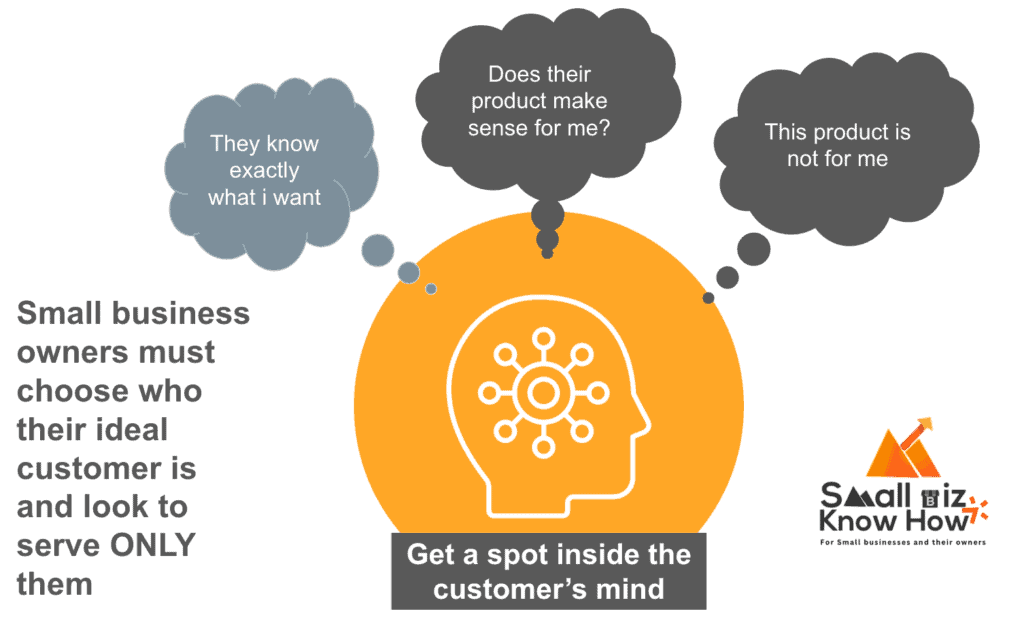During my interactions with several small business owners, i usually see blank faces when ‘differentiation strategy’ is mentioned. Business owners understand their craft really well, but to introduce this concept of differentiation, lets look at a made up story.
Learn the essence of differentiation strategies from “The Tale of Two Coffee Shops”
Once in a bustling town, there were two coffee shops situated across the street from each other: “Java Joe’s” and “Brew & View”.

Java Joe’s was like any other coffee shop you might find. They sold various types of coffee, from espressos to lattes, along with a selection of pastries. The shop had a comfortable setting, free Wi-Fi, and was a decent place for a customer to stop by.
Directly across the street was Brew & View, which, at first glance, appeared to offer the same things as Java Joe’s. However, Brew & View had a unique twist: it was themed around classic cinema. The interior resembled an old movie theater, complete with posters of classic films and vintage decor. Each week, they screened old movies for free, where customers could enjoy their favourite brews while watching a classic.
Now, let’s talk about their business. Java Joe’s had its regulars, but it faced tough competition, not just from Brew & View but from other coffee shops and chains in the area. They were doing okay, but their growth was slow, in fact it was minimum.
On the other hand, Brew & View started gaining popularity rapidly. People didn’t just come for the coffee; they came for the experience. It wasn’t unusual to see people traveling across town just to have their coffee in this unique setting. Brew & View became a topic of conversation, a destination, and a community hub for movie enthusiasts and coffee lovers alike.
This story of Java Joe’s and Brew & View illustrates the power of differentiation strategy, which is a critical component of brand strategy for any small business. Both coffee shops sold similar products, but Brew & View distinguished itself by offering a unique experience, tapping into a specific niche (classic cinema lovers) and creating an environment that was more than just about selling coffee
What is a differentiation strategy for a small business?
Now that you have had your fair share of the cliche’d coffee shop example as a small business, lets get into the meat of the subject on what differentiation means. At the outset, as a small business you should have figured out your brand positioning so that you can choose the best differentiation strategy that works for you.
In its simplest form, differentiation strategy is about making your business stand out from your competition. It’s not just about being different; it’s about being uniquely attractive to your target market. Think of it as your business’s unique fingerprint in the marketplace.
In order to do this, as a business owner, you will have to ask a question to yourself ‘What is the conviction that I hold, that others disagree with?’. Getting an answer to this question will let you take a stance in the market and put yourself and your brand out there to be a subject of debate and discussion.
Naturally, when you take a stance, you will have an audience that agrees with you and those that disagree with you. Use this debate to create a strong bond and community among those who agree with your stance and build your brand on top of that community.
There are some structured processes that academicians and marketeers have coined to a differentiation strategy that a small business can use. Lets look at them from an academic lens.
What are the types of differentiation strategy that a small business can use?
Now that we understand the basics of what a differentiation strategy is and why it’s important, let’s dive into the different types of differentiation strategies you can consider for your businesses. All of these require a deep customer understanding.
Product Differentiation
This is perhaps the most straightforward approach. It involves making your product or service different from and better than what’s already available. Think of unique features, superior quality, or innovative design. For instance, a bakery might offer gluten-free or vegan options that are not available in other local bakeries.
Service Differentiation
Service differentiation focuses on how you deliver your product or service. This could include exceptional customer service, faster delivery times, or a more personalized service experience. For example, a local bookstore might offer a book delivery service for elderly or disabled customers.
Channel Differentiation
This involves using different methods or platforms to sell your products or services. It could be an online store for a product typically sold in physical shops or exclusive distribution in select outlets. For example, a small fashion brand might sell their clothing only through eco-friendly or ethical retail stores.
Relationship Differentiation
Building strong relationships with customers can be a key differentiator. This might involve loyalty programs, customer appreciation events, or personalized communication. A small coffee shop, for instance, could create a loyalty program that offers free coffee after a certain number of purchases.
Brand Image or Reputation Differentiation
This strategy focuses on building a strong brand image or reputation that sets you apart. It might be through a distinctive logo, a unique store design, or an association with a particular lifestyle or set of values. A local gym might brand itself as an exclusive, boutique fitness center with a focus on holistic wellness.
Price Differentiation
While this might seem counterintuitive, price can be a differentiation strategy. This doesn’t always mean being the cheapest. It can also mean adopting a premium pricing strategy that aligns with a perception of higher quality or exclusivity. A small artisanal chocolate shop might price their products higher, reflecting their gourmet quality and craftsmanship.
Experience Differentiation
Creating a unique and memorable customer experience can be a powerful differentiator. This could involve store ambiance, customer engagement activities, or unique brand experiences. A bookstore, for example, might host weekly storytelling sessions, creating a memorable experience for both children and parents. Here the differentiation is around catering to the reading needs of a family with young children.
What is a broad differentiation strategy?
In addition to the above strategies for differentiation, a business can adopt either a broad based differentiation strategy or a focussed strategy.
In a broad based approach, the business can offer a product or solution that caters to a large variety of customers. Such a strategy is best left to large corporates or house of brands that have the financial muscle and breadth of talent to think and execute a broad based strategy.
As a small business, if you want to serve everyone, you are going to fail.
Examples of companies using broad differentiation strategies
The best example of a business that uses this broad based differentiation strategy is Costco. Costco’s value proposition is ‘everyday low prices’ at ‘great quality’ and its ‘readily accessible’. Its one of the few companies that has mastered all three – low prices, great quality and high speed. The holy trinity of operational excellence that many businesses fail to achieve.
What is a focussed differentiation strategy?
This is exactly what small businesses should strive to pursue. This requires what i mentioned above, where small business owners need to take a stance and stick to that stance consistently.
In a focussed strategy, businesses need to clearly identify who their products are for and for whom their products are not for.
This drives other decisions such as marketing communication, distribution channels, partnerships and everything else that is associated with the business.
Its not the decision itself that assures success, but its the consistency of implementation that will see a small succeed with this approach.
Small business who become thought leaders in their field, often seem to fail repeatedly till they succeed as they stick to their convictions over time and remain consistent in what they do.

Example of companies using focussed differentiation strategies
Many small businesses and companies have found success with a focussed strategy to differentiate their brand. A great example of one such company is Forrest Essentials, an Indian beauty brand that started in 2000. The founder Mrs Mira Kulkarni, started with nothing, she learnt how to make soap using natural ingredients and she stuck to that plan ever since. Forrest essentials is now a $5 million dollar company now and ranks consistently among the worlds best premium beauty brands.

What is a product differentiation strategy for a small business?
Product differentiation strategy is the strategy used by a business to target a specific customer only with the virtues of the product they sell. The product is tailored to suit the preferences of the specific customer only.
The company relies on the product to help in its business differentiation. There are certain factors that a small businesses should keep in mind while trying to lead with this strategy.
- Are you solving a specific problem for the target customer?
- Is that problem a really big problem for your customer?
- How good is your offering compared to the competition?
- What is the differentiating parameter other than the price? Is it quality, convenience or something else?
Example of a business that successfully implemented a product differentiation strategy

An example that stands out for me is Warby Parker, the American retailer of prescription glasses and sunglasses. Warby Parker has a single price point for a variety of glasses they sold. They also had a direct to customer distribution model. Their product lineup, the pricing and distribution focused on simplicity.
Warby Parker differentiated itself in the eyewear market through a lot of segment first product innovations and processes that benefitted them over time to drive growth and the recognition they enjoy today.
Can you break into a crowded market with unique features in your product?
If your have a unique features in your product, it means you have solved for one of the biggest stumbling blocks, which is understanding the exact nature of the customer’s pain point and solving for it
You cannot claim to have a differentiation strategy without solving for your customer’s biggest pain point
The next question that many small business owners have is that, “Great We have something in our product, but is that good enough to break into an already crowded market?”.
Lets get to the root of it. If a market is crowded, then it means that there is serious money to be made in that market. As contradictory as it may sound, in a crowded market, you will have the ‘A’ players and then there are the rest of them.
The ‘A’ Players, are usually just a couple of players, who dominate the market in terms of cornering profits. Lets take the smartphones since thats easy for all to understand. Apple takes home almost 90% of the entire smartphone industry’s profits (20% of the players corner 99% of a sector’s profits).
In your niche, identify who the A players are. Look at what helps them get the edge, in many cases, its usually a moat that they have built over the years, either in the form of superior supply chain capabilities, or by ‘complex integration’ of various technical capabilities that no one can do better (Apple’s real moat).
The moat of the companies who are A players is seldom money since throwing money at a problem is not the right approach.
See how your business can start chipping away at that moat in your home town or local community. Thats the only way your product with unique features can have a meaningful chance of breaking through in the crowded market.
Identifying the moat of the ‘A’ players, start doing something better than them in your own community. You need to win the turf war at home. The moment you start winning, you will either be approached for a partnership or a buy-out from the A players. Either ways it will be a win-win for you.
How does a differentiation strategy fit into the brand positioning for a small business?
Brand positioning is basically, the ‘mental spot’ your business occupies in the minds of your customer. It is very closely tied to customer preferences and how your business caters to those preferences. Each customer be it a consumer or another business have different tastes and preferences.
In order to occupy the right space in your customer’s mind, your brand positioning must be supported by the differentiation strategy that you choose to pursue.
Circling back to where we started about differentiation, when you choose to take a stance to support what you strongly believe, your choice, your messaging, your values should strongly resonate with the customer you want to serve.
By its inherent nature, when you differentiate, you will choose to do something and you will choose NOT to do something. I have written about a friend who runs a boutique business in my brand positioning article, where she consciously chooses to NOT serve some customers and that reflects in what her USP for her product is.
You as a business owner, have to make sure that your value proposition solves for your customer’s biggest pain point and aligns with the stance that you take. In essence, what you say and what you do have to be in sync.
